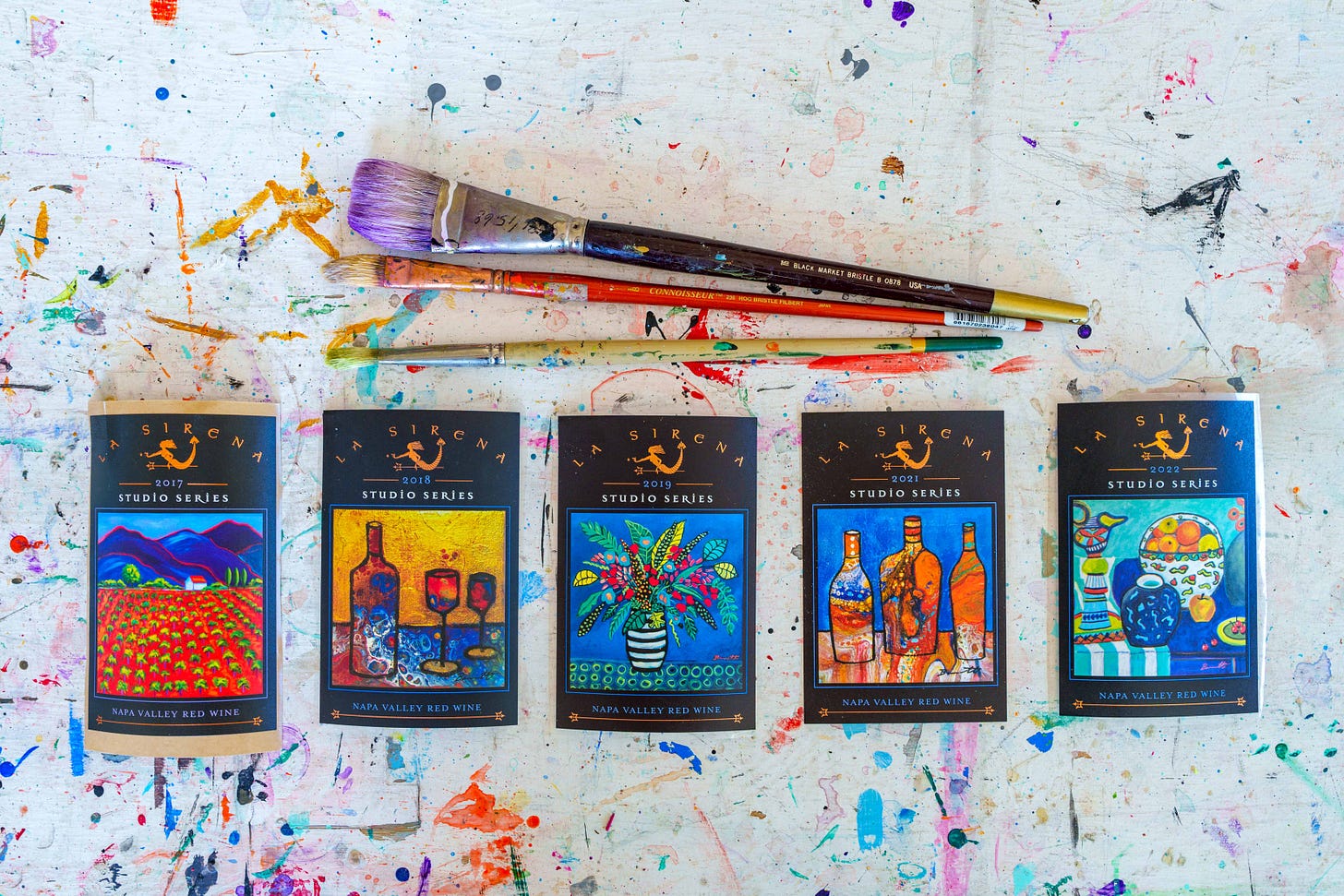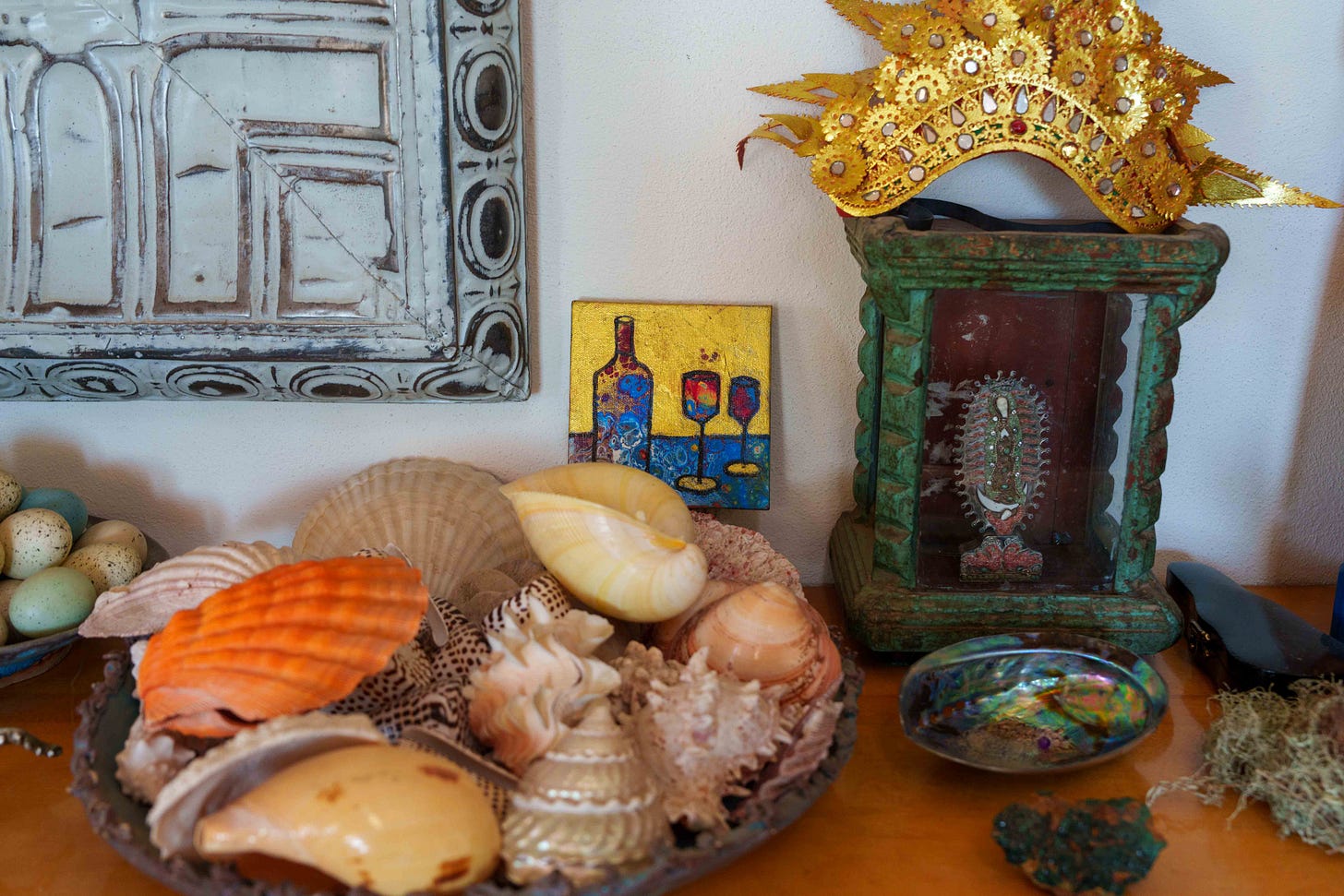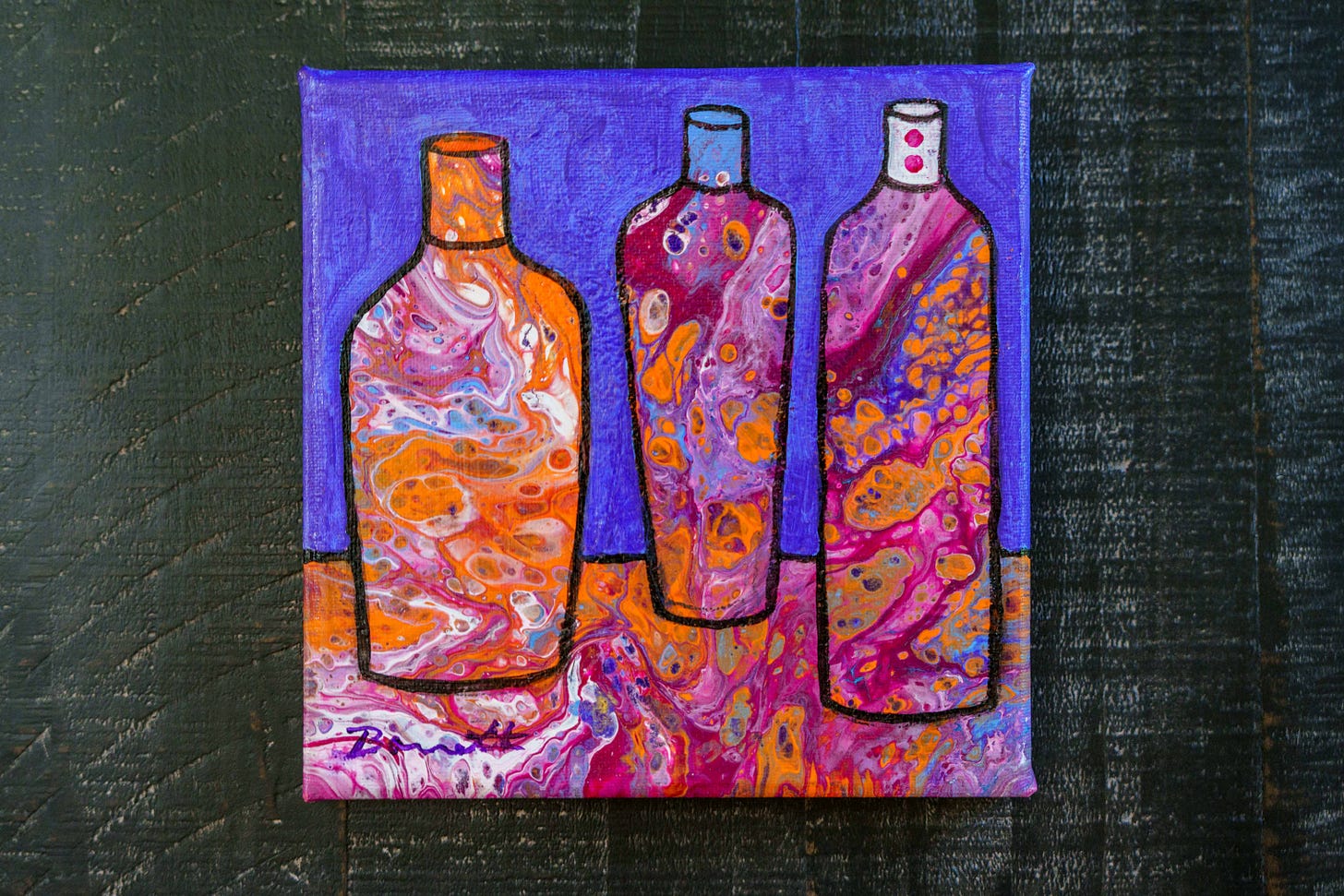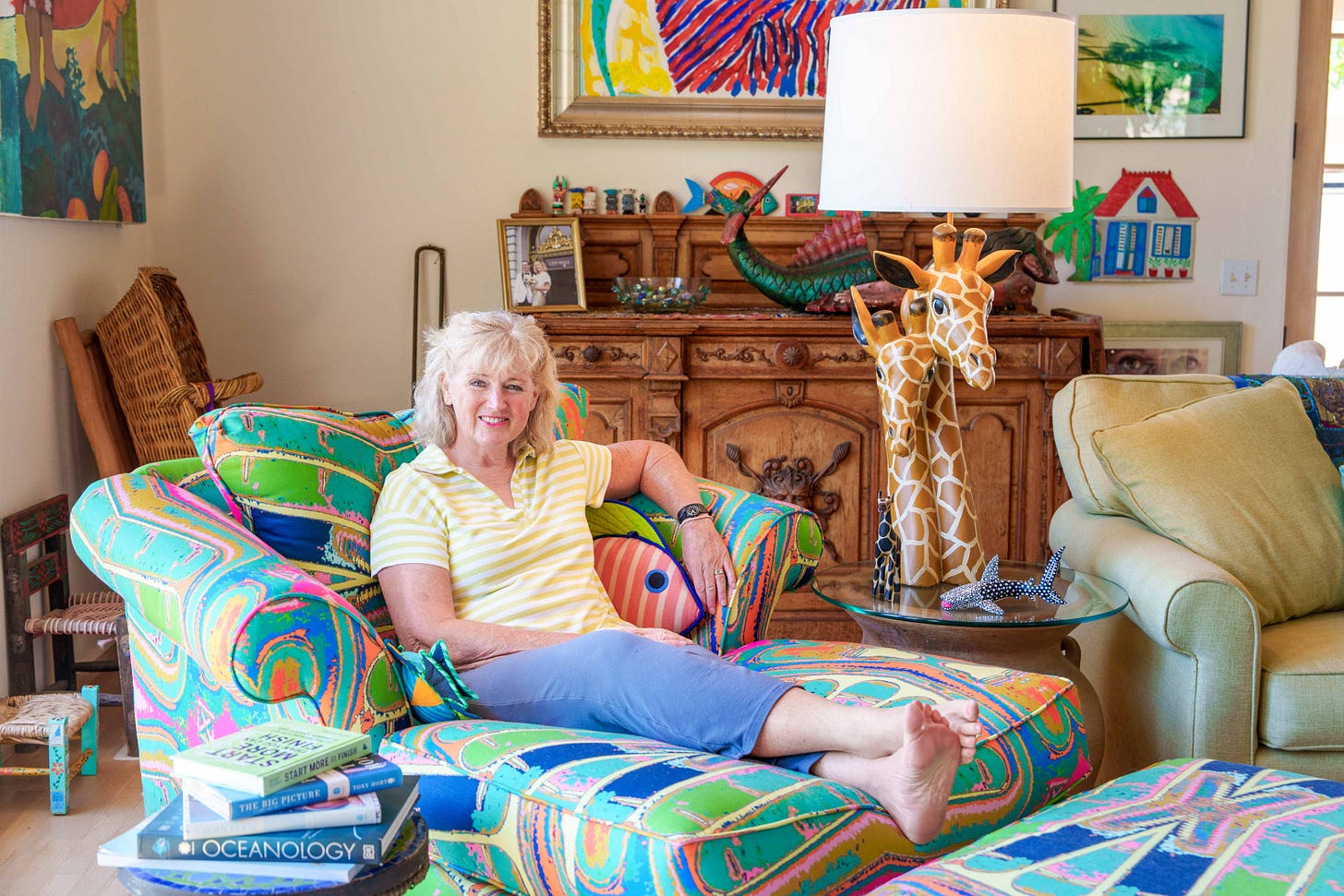As 2024 comes to a close, we are dedicating the final two weeks to a countdown of the year’s most-read stories. Covering a wide range of local topics, these pieces reflect the varied interests of our readers and offer a moment to look back before turning toward 2025. Join us as we revisit the highlights that shaped the year. Original run date: Nov 2, 2024.
Support Independent Local News
As we celebrate the past year, we also reflect on the future of independent local journalism. Napa Valley Features remains ad-free, conflict-of-interest free and locally owned but depends on reader support to continue. With nearly 4,300 subscribers and fewer than 1,000 paid, even small contributions — just 16 cents a day — can make a big difference. Your support ensures Napa Valley Features stays independent, relevant and a trusted voice for our community.

NAPA VALLEY, Calif. — In any conversation about Napa Valley’s wine industry, Heidi Barrett's name is bound to come up. Dubbed the "First Lady of Wine" and the "Queen of Cult Cabernet," Barrett has established herself as one of the most influential winemakers of our time. But these titles only scratch the surface. Barrett is also a gifted artist, dedicated mother, helicopter pilot and expert scuba diver, with contributions to Napa Valley that reach far beyond the vineyard.

The Influence of Family: A Legacy in Winemaking
Barrett’s journey into winemaking was profoundly shaped by her parents. Her father, Dick Peterson, a renowned winemaker, and her mother, Diane Brisebois Peterson, an artist, provided a unique blend of science and creativity that influenced Barrett’s approach to both wine and art. Growing up in Modesto, where her father worked at Gallo, Barrett was immersed in the innovation and production that defined the winery.
"Growing up, my dad would bring us to the winery, and it felt like visiting Willy Wonka's chocolate factory," Barrett said. "We got to see how the bottling line worked, how glass was being made. It was magical."
“Wine should be beautiful and complete, flowing like silk across the palate.”
In 1968, the family moved to St. Helena when her father became the winemaker at Beaulieu Vineyard, taking over from André Tchelistcheff. This move deepened Barrett’s connection to wine, spending lots of time at the winery with her father, working summers on the bottling lines or in the labs.
Her mother’s exuberant spirit and artistic talent also left a lasting impact.
"My mom was a little dynamo, a real explosion of life,” Barrett said. “She was the reason I scuba dive, paint and do many of the things I do today.”
Her mother’s versatility in art forms — painting, jewelry making, ceramics and even ice carving — inspired Barrett to explore her own artistic side, which later became integral to her winemaking.
Barrett’s winemaking legacy is carried forward by the next generation, with both of her daughters playing key roles in the industry. She is married to Bo Barrett, a prominent Napa Valley winemaker and co-owner of Chateau Montelena. Their daughters, Chelsea and Remi, are both deeply embedded in the wine industry. Chelsea is a successful winemaker at Materra Cunat Family Vineyards and other notable wineries. She also collaborates with her mother on several projects, including their joint label, Aviatrix. Remi, meanwhile, manages sales and marketing for another of Barrett’s brands, La Sirena.

"We are so incredibly lucky to have two daughters who both have the skill set and desire to run the company in the future,” she said. “They will be the third generation carrying on these traditions."
This succession plan ensures that the family’s winemaking tradition will continue, blending the old with the new as Chelsea and Remi bring their own unique perspectives to the business.
1980s and 1992: A Period of Growth and Triumph
Heidi Barrett's path to becoming a renowned winemaker began in the last summer of high school, working with her father after he moved from BV to The Monterey Vineyard. She continued this through her college summers. This early exposure to the winemaking process sparked her interest and laid the groundwork for her future career. After graduating from UC Davis in 1980 with a degree in fermentation science — one of only four women in her class — Barrett was eager to expand her knowledge and gain hands-on experience.
She honed her winemaking skills through internships in both Australia and Germany before returning to the Napa Valley, where her first job was working for Justin Meyer at Silver Oak Cellars in 1980, shortly after graduating from college. At that time, Silver Oak wines were still being made at Franciscan Vineyards before the winery had its own facility. Barrett recalls the early days of her career fondly, including her time working the night shift at Rutherford Hill in 1982, running centrifuges — a technology once used to clarify juice before fermentation but is now obsolete. She also spent time at what was then called Chateau Bouchaine (now Bouchaine Vineyards), working under renowned winemaker Jerry Luper, a mentor she shares with her husband, Bo. Luper’s teachings on traditional winemaking practices and cellar techniques made a lasting impact on both of them, and Barrett continues to apply those fundamentals in her own winemaking today.
At just 25 years old, Barrett became the head winemaker at Buehler Vineyards in 1983, where she began to attract attention for her ability to craft elegant, balanced wines. This role marked the beginning of her rise in Napa Valley’s wine scene.
In 1988, Barrett made a pivotal decision to leave her full-time winemaker position and strike out on her own as an independent winemaker, a choice that significantly shaped her career. This move allowed her to take on multiple clients, accelerating her learning curve and giving her the flexibility to balance her career with raising her two young daughters.
Her first major winemaking client was Dalla Valle Vineyards. This arrangement proved incredibly successful, as the 1992 Dalla Valle’s "Maya" Cabernet Sauvignon would earn Barrett a perfect 100-point score from Wine Advocate's Robert Parker Jr., solidifying her reputation as a winemaking star in Napa Valley.
In 1992 Barrett also began making wine for Jean Phillips at Screaming Eagle. Tasked with creating the inaugural vintages, Barrett produced what would become one of the most sought-after wines in the world. The 1992 Screaming Eagle Cabernet Sauvignon also earned a 99 point score from Parker, marking another defining moment in her career and further establishing Napa Valley’s status as a producer of world-class “cult” cabernet sauvignon. Barrett would go on to produce multiple 100-point wines, from a variety of wine reviewers, within a few short years, solidifying her dominance and leading Parker to refer to her as “The First Lady of Wine” as well as the “Queen of Cult Cabernet.”

"Those early vintages were game-changers," Barrett said. "It was intense, but I knew we were onto something special. It was about creating a wine that was not just good, but extraordinary."
Barrett’s decision to become an independent winemaker was a turning point that allowed her to make wine from some of Napa Valley’s most prestigious vineyards and gave her the autonomy to craft each wine on her own terms. This flexibility also enabled her to manage the demands of her career while maintaining her commitment to her family and exploring other passions, such as painting, which she also took up in 1992.
Heidi and Bo Barrett: A Partnership in Wine
Heidi and Bo Barrett’s relationship blends personal and professional synergy, shaping their careers. They met in the early 1980s, both emerging as influential figures in Napa Valley’s wine scene. Bo, the son of Jim Barrett, who revived Chateau Montelena, played a role in the winery’s rise to international fame after it gained global recognition when its winemaker, Miljenko "Mike" Grgich, crafted the 1973 chardonnay that triumphed at the 1976 Judgment of Paris, outperforming prestigious French white Burgundies.
Their shared love for winemaking, deep roots in the region and adventurous spirit led to their marriage, forging one of the most powerful partnerships in the wine industry.
Now an owner, former winemaker, and CEO of Chateau Montelena, together they also created Barrett & Barrett, a label known for its limited-release, critically acclaimed wines.
"Bo has always been my rock, both in our marriage and work," Heidi said.
Their collaboration at Barrett & Barrett reflects their commitment to excellence, combining Heidi’s creative and technical skills with Bo’s operational and viticultural acumen.
"Bo runs Chateau Montelena as an ever-adapting family legacy," she said, highlighting his dedication to preserving tradition while embracing innovation.
Blending Wine: An Artistic Symphony
Heidi Barrett’s approach to winemaking is deeply rooted in her artistic instincts, which she translates into the science of blending wines. For Barrett, creating a blend is akin to painting a canvas.
"I look at wine blends as colors on my palette. If I need more blue, I’ll go over here and add some of this or that," she said.

This artistic approach allows her to create wines that are not just beverages but complete compositions.
Barrett often uses a self-devised system to achieve this balance, which she calls the "count of six." She visualizes the wine in three phases — beginning, middle and end — assigning a count of two to each.
"The beginning palate is one-two, mid-palate three-four and finish is five-six,” she said. “Cabernet or any red wine should be 1-2-3-4-5-6, beautiful and complete, flowing like silk across the palate. If something is short, like cab Franc, which is often a big burst up front with no middle or length, it’s greatly helped by blending with cabernet, which has the 3-4-5-6."
This system ensures the wine is silky and maintains the balance and elegance she strives for in every bottle.
Barrett's understanding of balance in winemaking was significantly influenced by her early experiences in Germany. As an intern in the Württemberg region, at the Weingärtner-Zentralgenossenschaft in Möglingen, she first encountered the concept of "rund" or "roundness" in wine, a term used to describe a wine's balance.
"I realized you could do this with anything — tannin, alcohol, body, acidity, fruit character, she said. “Either it's round or it's not.”
Painting and Wine: A Creative Intersection
Barrett’s love for art is not only a personal outlet but also an integral part of her winemaking brand. Her affinity for bold, vibrant colors translates directly into her painting, which has become a defining feature of some of her wine labels. In 1992, Barrett began experimenting with painting, initially working on small canvases before moving on to larger works. Her art style is characterized by bold, expressive strokes and vivid colors, much like the wines she crafts.
"I don’t even own brown or beige paint; they just don’t make me feel good," she said, laughing.
Her paintings are a reflection of her personality — bright, lively and full of energy and joy.
This creative vision is most prominently showcased in La Sirena's "Studio Series," a line of wines that feat Barrett’s original artwork on each label.
"The idea came from my daughter Remi,” Barrett said. “She suggested we create a wine series that would feature my art every year.”
Each label in the "Studio Series" is derived from one of her paintings, carefully selected to complement the character of the wine inside the bottle. The series began with a vibrant painting of a vineyard, which now adorns the first release of the series. The artwork not only adds a personal touch to the bottles but also creates a direct connection between Barrett’s two passions — wine and art.
"Remi and I work closely on choosing the paintings, and the wine itself is what I like to call a winemaker's wine — our Pirate TreasuRed brand falls into that category, too, where it's not just cab; it's my own proprietary blend," Barrett said.
The labels are designed to capture the essence of the wine, much like how a painting captures the essence of a moment. For Barrett, this intersection of art and winemaking is a natural extension of her creative process, where each bottle becomes a canvas and each blend a masterpiece.
The Challenges of Napa Valley: Beyond Cabernet
Barrett believes Napa Valley would benefit from greater diversity in grape varietals.
"Napa Valley is cab," she said. "And I love cab; it's my favorite thing to make. But now it's overplanted. Everyone had extra cab for sale this year."
Barrett advocates for a more diversified approach to viticulture in Napa Valley.
"Some vineyards should be planted with other varietals that people would like to buy,” she said. “We don’t eat the same exact food every day; we like variety. The same goes for wine.”
In her own vineyards, Barrett has taken steps to plant different varieties in their Napa Valley vineyards such as Muscat Canelli, grenache and syrah, alongside cabernet.
"It can be hard to find anything other than cab in the Napa Valley right now, but that likely needs to change. Napa has land that would be great for other varietals – and once there were many different options here, and I hope people start exploring planting them again," Barrett said.
Barrett’s approach is not just about responding to market conditions, but also about preserving the essence of Napa Valley.
"We need to rethink and sort out how we can make it possible again for visitors to come here and afford to explore the region and buy wine,” she said. “It's going to take a little rethinking and sorting out, and probably a little bit of a correction, but I am sure we can do it.”
Looking Ahead
Despite her many past accomplishments, Barrett remains focused on the future. She strives to innovate in both her winemaking and her art, always seeking new ways to express her creativity. Her latest project, Aviatrix, under the La Sirena brand, is a collaboration with her daughter, Chelsea, and explores new varietals and AVAs outside of Napa Valley.

As part of her adventurous spirit, Barrett, a licensed helicopter pilot, often uses the helicopter parked at her home to fly out to distant vineyards during harvest season to sample grapes. She also takes yearly scuba diving trips with her family and friends to some of the world's most pristine dive sites, such as those in Indonesia and Papua New Guinea, reflecting her love for exploration and the natural world.
As Barrett looks ahead, she remains as dedicated and driven as ever.
"I'm always shooting for delicious," she said with a laugh.
And whether it’s in a bottle of wine or on a canvas, that commitment is evident in everything she creates.
In a world where winemaking is often seen as just another business, Heidi Barrett stands out as a true artist, blending science, art and adventure into a life that’s as rich and complex as the wines she’s known for.
If today's story captured your interest, explore these related articles:
Under the Hood: The Most Important Election in Our Lifetimes
Under the Hood: Heat Spike Intensifies Napa's Wine Industry Challenges
Under the Hood: Living With Fire in Northern California's Wine Country
Under the Hood: Napa Valley 2024 Has High Quality but Low Demand
Under the Hood: Deepening Crisis — Pressures Reshaping Napa Valley’s Wine Industry
Under the Hood: 10 Years Later, A Reflection on the 2014 South Napa Earthquake
Under the Hood: Climate Change's Growing Impact on Napa Valley
Bracing for the Blaze: The Wine Industry Prepares to Battle Smoke Taint
Under the Hood: Charlie’s in St. Helena Is Not Only New — It’s Great
Under the Hood: Navigating the Future of the Napa Valley Model
Under the Hood: Slowing Travel, Declining Wine Demand Threaten Napa Valley
Under the Hood: Napa County Faces Economic Challenges Due to Aging, Decreasing Population
Tim Carl is a Napa Valley-based photojournalist.





